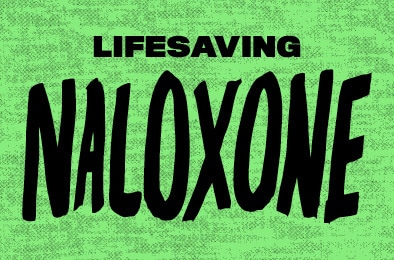What You Should Know About Xylazine
For additional resources from state and local health departments, visit Xylazine Resources.
A tranquilizer called xylazine is increasingly being found in the US illegal drug supply and linked to overdose deaths.1 Xylazine—which is not approved for use in people—can be life-threatening and is especially dangerous when combined with opioids like fentanyl.2
Due to its impact on the opioid crisis, fentanyl mixed (adulterated) with xylazine has been declared an emerging threat by the White House’s Office of National Drug Control Policy. On July 11, 2023, the White House released a National Response Plan to address the emerging threat of fentanyl mixed with xylazine.
The presence of xylazine in drugs tested in labs increased in every region of the United States from 2020-2021, with the largest increase in the South.3 Studies from specific areas found similar increases. One study from 10 US cities showed xylazine was involved in less than 1% of drug overdose deaths in 2015 and in nearly 7% in 2020.4 In samples from eight syringe service programs in Maryland tested between 2021 and 2022, xylazine was found in almost 80% of drug samples that contained opioids.5 In Philadelphia, Pennsylvania, xylazine was found in 31% of heroin and/or fentanyl overdose deaths in 2019.6
In a recent study from CDC’s State Unintentional Drug Overdose Reporting System (SUDORS), among 20 states and Washington D.C. the monthly percentage of deaths involving illegally made fentanyl (IMF) with xylazine detected increased from 3% in January 2019 to 11% in June 2022.7 During January 2021–June 2022 in 31 states and Washington D.C., xylazine was detected in a higher percentage of IMF-involved deaths in the Northeastern U.S.7
This guide answers some common questions about xylazine, xylazine use, and overdoses involving xylazine. This page is not intended to give medical advice, clinical guidance, or treatment protocols.
Xylazine (also called “tranq” or “tranq dope”) is a non-opioid sedative or tranquilizer. Although not a controlled substance in the United States, xylazine is not approved for use in people.8
What are symptoms and health risks of xylazine?
When used in people, xylazine can cause (FDA Nov alert):
- sedation
- difficulty breathing
- dangerously low blood pressure
- slowed heart rate
- wounds that can become infected
- severe withdrawal symptoms
- death
How are people exposed to xylazine?
Illegal drugs such as cocaine, heroin, and fentanyl can be mixed with xylazine, either to enhance drug effects or increase street value by increasing their weight.3,9 People who use illegal drugs may not be aware of the presence of xylazine. DEA has seized xylazine and fentanyl mixtures in 48 of 50 states, and the DEA laboratory system reported that approximately 23% of fentanyl powder and 7% of fentanyl pills seized by the DEA in 2022 contained xylazine.10 Xylazine is usually injected, although it can be swallowed or sniffed.8
Should naloxone be given in the case of an overdose involving xylazine?
Naloxone should be given in response to any suspected drug overdose to reverse any possible opioid effects. Naloxone will not reverse the effects of xylazine.11 However, because xylazine is often used with opioids like fentanyl, naloxone should still be given. It’s important to call 911 for additional medical treatment, especially since the effects of xylazine may continue after naloxone is given.
What should be done for someone with signs and symptoms of a possible opioid overdose or an overdose involving opioids and xylazine?
- Call 911. Stay with the person until first responders arrive. Overdose is a medical emergency. First responders can assess the situation and provide treatment.
Good Samaritan laws are in place in most states to protect those who are overdosing and anyone assisting them in an emergency from arrest, charges, or a combination of these.
- Give naloxone. Naloxone can reverse the effect of any opioids and will not cause harm if opioids are not involved in an overdose.12 However, because naloxone will not address the impact of xylazine on breathing,13 effects of xylazine may continue after naloxone is given.
- Give rescue breaths. First responders have reported that rescue breaths are especially helpful for people who have used xylazine because it causes breathing to slow down.4,14 To give rescue breaths to adults, make sure the person’s airway is clear; place one hand on the person’s chin, tilt the head back, and pinch the nose closed. Place your mouth over the person’s mouth to make a seal and give two slow breaths. Watch for the person’s chest (but not the stomach) to rise and follow up with one breath every 5 seconds.
For people who use illegal drugs, the following strategies can help reduce the risk of overdose.
- Never use alone. A trusted contact can help reduce overdose risk by giving naloxone or calling 911 in case of an emergency. People who don’t have a trusted contact nearby can take advantage of services that allow people to seek non-judgmental support over a phone or video call when they are using drugs. Never Use Alone is a nationwide service that connects callers to trained volunteers who will gather basic information about the caller’s location, stay on the line to support the caller if they plan to use substances alone, and alert 911 if the caller becomes unresponsive.
- Carry naloxone and learn how to use it. Because xylazine is often mixed with opioids like fentanyl, naloxone should be given in response to a suspected overdose to reverse any possible opioid effects. Importantly, naloxone will not reverse effects of xylazine. In the event of an overdose, call 911 for additional medical treatment.

Provide rescue breaths. Rescue breaths are especially helpful for people who have used xylazine since xylazine causes breathing to slow down.4,14 Harm reduction experts also suggest rolling individuals on their side, into the recovery position. 15,16
- Know the risks of using illegal drugs with unknown ingredients. Illegal drugs are unregulated—they don’t come with an ingredients list. As a result, dosage and purity are difficult to determine. Heroin, fentanyl, and cocaine may be mixed with xylazine or other substances. Counterfeit pills that closely resemble prescription medications and contain illegal substances are increasingly common in the illegal drug market.17
- Seek medical care for skin wounds. Skin wounds may become infected and worsen quickly. When treated early, wounds can be managed with basic wound care techniques. If left untreated, wounds can lead to amputation or become life threatening.10
- Reduce injection-related risks. According to the National Harm Reduction Coalition, the risk of infection can be reduced by using sterile injection equipment, rotating injection sites, allowing skin veins time to heal before another use, and taking drugs in other ways besides injection.
- Test drugs before using. There are commercially available test strips to test for the presence of xylazine in a sample of drugs.
Fentanyl test strips can be used to test opioids, stimulants, or prescription medications for fentanyl18. When people have knowledge that their drugs contain fentanyl, they can take steps to reduce their risk of opioid overdose.
Community-based organizations and public health departments:
- Educate the public about the increasing presence of xylazine in the drug supply and how to respond to suspected xylazine-involved injuries and overdoses.
- Raise awareness of the changing illegal drug marketplace and the common use of illegally made fentanyl with other drugs like xylazine.
- Provide messaging to community groups (particularly those providing services to people at higher risk), community leaders, school officials, faith-based leaders, parents, students and others about the changing illegal drug supply and risks for exposure to strong opioids like fentanyl or fentanyl mixed with xylazine.
Harm reduction organizations:
- Call 911 immediately after recognizing an overdose or resuscitating a patient. Naloxone available in the field may not be enough to reverse a fentanyl-involved overdose, and in the case of fentanyl mixed with xylazine, symptoms associated with xylazine may continue after naloxone is given. More than one dose of naloxone may be required to restore normal breathing, and in cases involving xylazine rescue breaths should be given.
- Provide test strips for people who use drugs as part of community drug checking programs. These are key opportunities to educate people who use drugs about the increasing presence of xylazine. This also provides an opportunity to educate and encourage people who use drugs about how to use various harm reduction strategies.
- Link people who are at risk for overdose with care and track their retention in care programs, including wound care
- Increase overdose prevention education and take-home naloxone to people who use drugs, their friends, and others likely to witness or experience an overdose.19-22
- Partner with public safety and public health to obtain and disseminate the latest information on local drug supply and overdose trends.23,24
First responders to overdoses:
- Consider xylazine as a contributor to overdose when naloxone administration is ineffective.25
- Provide rescue breaths. Rescue breaths are an especially helpful intervention for people who have used xylazine since it causes breathing to slow down.4,14
Healthcare providers:
- Talk to patients about the changing illegal drug supply and risks for overdose and exposure to highly potent opioids like illegally made fentanyl and fentanyl mixed with xylazine.
- Counsel patients to call 911 and that naloxone will not reverse the effects of xylazine. In the event of an overdose involving fentanyl and xylazine, naloxone should still be given, but it’s important to note that the effects of xylazine may continue after naloxone administration. Reiterate the importance of calling 911 as the first step in reaction to an overdose involving fentanyl and xylazine.
- Provide active referral to treatment and care options and recovery support services,26 including wound care.
- Implement post-overdose response protocols that incorporate links between public health, treatment providers, community-based service organizations, and healthcare providers. These protocols promote overdose education, treatment, linkage to care. and medications for opioid use disorder and naloxone distribution.27,28
- Kariisa M, Patel P, Smith H, Bitting J. Notes from the field: xylazine detection and involvement in drug overdose deaths—United States, 2019. Morbidity and Mortality Weekly Report. 2021;70(37):1300.
- FDA alerts health care professionals of risks to patients exposed to xylazine in illicit drugs November 8, 2022. https://www.fda.gov/drugs/drug-safety-and-availability/fda-alerts-health-care-professionals-risks-patients-exposed-xylazine-illicit-drugs
- Drug Enforcement Administration. The growing threat of xylazine and its mixture with illicit drugs. 2022. https://www.dea.gov/sites/default/files/2022-12/The%20Growing%20Threat%20of%20Xylazine%20and%20its%20Mixture%20with%20Illicit%20Drugs.pdf
- Friedman J, Montero F, Bourgois P, et al. Xylazine spreads across the US: A growing component of the increasingly synthetic and polysubstance overdose crisis. Drug and alcohol dependence. 2022;233:109380.
- Russell E, Sisco E, Thomson A, et al. Rapid Analysis of Drugs: A Pilot Surveillance System To Detect Changes in the Illicit Drug Supply To Guide Timely Harm Reduction Responses – Eight Syringe Services Programs, Maryland, November 2021-August 2022. MMWR Morb Mortal Wkly Rep. 2023;72(17):458-462. Published 2023 Apr 28. doi:10.15585/mmwr.mm7217a2
- Korn WR, Stone MD, Haviland KL, Toohey JM, Stickle DF. High prevalence of xylazine among fentanyl screen-positive urines from hospitalized patients, Philadelphia, 2021. Clinica Chimica Acta. 2021;521:151-154.
- Kariisa M, O’Donnell J, Kumar S, Mattson CL, Goldberger BA. Illicitly Manufactured Fentanyl–Involved Overdose Deaths with Detected Xylazine — United States, January 2019–June 2022. MMWR Morb Mortal Wkly Rep 2023;72:721–727. DOI: http://dx.doi.org/10.15585/mmwr.mm7226a4.
- Thangada S, Clinton HA, Ali S, et al. Notes from the field: xylazine, a veterinary tranquilizer, identified as an emerging novel substance in drug overdose deaths—Connecticut, 2019–2020. Morbidity and Mortality Weekly Report. 2021;70(37):1303.
- Wong SC, Curtis JA, Wingert WE. Concurrent detection of heroin, fentanyl, and xylazine in seven drug-related deaths reported from the Philadelphia Medical Examiner’s Office. J Forensic Sci. Mar 2008;53(2):495-8. doi:10.1111/j.1556-4029.2007.00648.x
- DEA Reports Widespread Threat of Fentanyl Mixed with Xylazine, Public Safety Alert, 2022: https://www.dea.gov/alert/dea-reports-widespread-threat-fentanyl-mixed-xylazine
- Nunez J, DeJoseph ME, Gill JR. Xylazine, a Veterinary Tranquilizer, Detected in 42 Accidental Fentanyl Intoxication Deaths. Am J Forensic Med Pathol. Mar 1 2021;42(1):9-11. doi:10.1097/paf.0000000000000622
- Substance Abuse Mental Health Services Administration. SAMHSA Opioid Overdose Prevention Toolkit. 2018. Accessed February 8, 2023. https://store.samhsa.gov/sites/default/files/d7/priv/sma18-4742.pdf
- Capraro AJ, Wiley JF, 2nd, Tucker JR. Severe intoxication from xylazine inhalation. Pediatr Emerg Care. Dec 2001;17(6):447-8. doi:10.1097/00006565-200112000-00012
- Reyes JC, Negrón JL, Colón HM, et al. The Emerging of Xylazine as a New Drug of Abuse and its Health Consequences among Drug Users in Puerto Rico. Journal of Urban Health. 2012/06/01 2012;89(3):519-526. doi:10.1007/s11524-011-9662-6
- Mulders P, van Duijnhoven V, Schellekens A. Xylazine Dependence and Detoxification: A Case R Psychosomatics. 2016/09/01/ 2016;57(5):529-533. doi:https://doi.org/10.1016/j.psym.2016.05.001
- Ehrman-Dupre R, Kaigh C, Salzman M, Haroz R, Peterson L-K, Schmidt R. Management of xylazine withdrawal in a hospitalized patient: A case report. Journal of Addiction Medicine. 2010;16(5):595-598.
- Palamar JJ, Ciccarone D, Rutherford C, Keyes KM, Carr TH, Cottler LB. Trends in seizures of powders and pills containing illicit fentanyl in the United States, 2018 through 2021. Drug Alcohol Depend. 2022 May 1;234:109398. doi: 10.1016/j.drugalcdep.2022.109398. Epub 2022 Mar 31. PMID: 35370014; PMCID: PMC9027012.
- Peiper NC, Clarke SD, Vincent LB, Ciccarone D, Kral AH, Zibbell JE. Fentanyl test strips as an opioid overdose prevention strategy: Findings from a syringe services program in the Southeastern United States. Int J Drug Policy. 2019 Jan;63:122-128. doi: 10.1016/j.drugpo.2018.08.007.
- O’Donnell J, Gladden RM, Mattson CL, Hunter CT, Davis NL. Vital Signs: Characteristics of Drug Overdose Deaths Involving Opioids and Stimulants — 24 States and the District of Columbia, January–June 2019external icon. MMWR Morb Mortal Wkly Rep 2020;69:1189–1197.
- McDonald R, Strang J. Are take-home naloxone programmes effective? Systematic review utilizing application of the Bradford Hill criteria. Addiction. 2016;111(7):1177-1187.
- Townsend T, Blostein F, Doan T, Madson-Olson S, Galecki P, Hutton DW. Cost-effectiveness analysis of alternative naloxone distribution strategies: First responder and lay distribution in the United States. Int J Drug Policy. 2020;75:102536.
- Lambdin BH, Bluthenthal RN, Wenger LD, et al. Overdose Education and Naloxone Distribution Within Syringe Service Programs – United States, 2019. MMWR Morb Mortal Wkly Rep. 2020;69(33):1117-1121. Published 2020 Aug 21.
- Green TC, Park JN, Gilbert M, McKenzie M, Struth E, Lucas R, Clarke W, Sherman SG. An assessment of the limits of detection, sensitivity and specificity of three devices for public health-based drug checking of fentanyl in street-acquired samplesexternal icon. Int J Drug Policy. 2020 Mar;77:102661.
- Harper L, Powell J, Pijl EM. An overview of forensic drug testing methods and their suitability for harm reduction point-of-care services. Harm Reduct J. 2017 Jul 31;14(1):52.
- Alexander RS, Canver BR, Sue KL, Morford KL. Xylazine and overdoses: trends, concerns, and recommendations. American Journal of Public Health. 2022;112(8):1212-1216.
- Winhusen T, Walley A, Fanucchi LC, Hunt T, Lyons M, Lofwall M, Brown JL, Freeman PR, Nunes E, Beers D, Saitz R, Stambaugh L, Oga EA, Herron N, Baker T, Cook CD, Roberts MF, Alford DP, Starrels JL, Chandler RK. The Opioid-overdose Reduction Continuum of Care Approach (ORCCA): Evidence-based practices in the HEALing Communities Studyexternal icon. Drug Alcohol Depend. 2020 Oct 4;217:108325.
- Houry DE, Haegerich TM, Vivolo-Kantor A. Opportunities for Prevention and Intervention of Opioid Overdose in the Emergency Department. Ann Emerg Med. 2018 Jun;71(6):688-690.
- Houry D, Adams J. Emergency Physicians and Opioid Overdoses: A Call to Aid. Ann Emerg Med. 2019 Sep;74(3):436-438.


